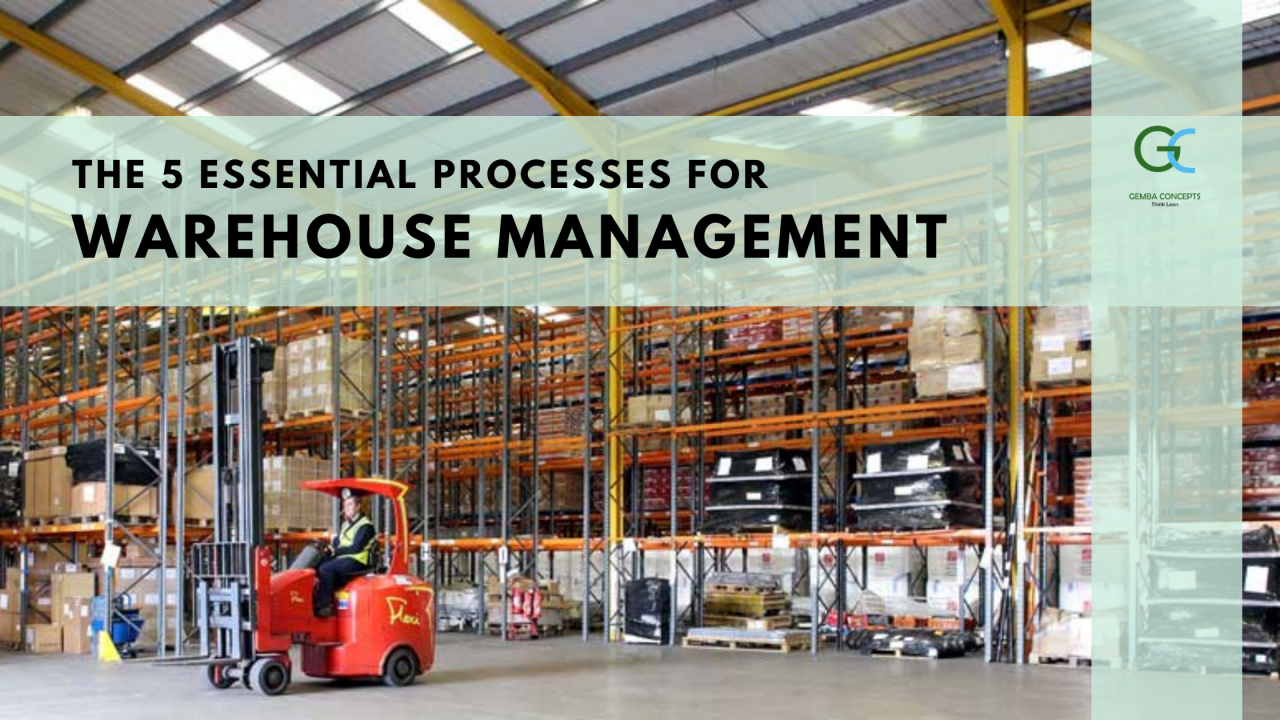The 5 Essential Processes for Warehouse Management
What is warehouse management?
Warehouse management refers to the oversight of operations in a warehouse. This includes receiving, tracking, and storing inventory, as well as training staff, managing shipping, workload planning, and monitoring the movement of goods.
What is a warehouse management system?
A warehouse management system (WMS) is software designed to optimize operational processes in a warehouse. By implementing a WMS you have full visibility into real-time inventory levels and storage, staff productivity, demand forecasting, and order fulfillment workflows within a warehouse.
Warehouse management systems are important as they eliminate manual processes and guesswork and instead streamline processes that save time and provide a more accurate snapshot of what’s going on inside a facility without needing to conduct continuous warehouse audits.
This information helps warehouse managers identify areas of improvement and track progress to drive optimizations throughout the supply chain, from when inventory hits the loading docks to when it’s shipped out to its next destination.
Warehouse management software provides the tools to drive strategic big picture improvements as well as those to monitor the day-to-day. What a management team sees in the warehouse management system will be different from a picker or packer who relies on the system to know what to pick or pack next on the warehouse floor.
Each warehouse management system may have different functionality deployed depending on the business it serves (e.g., what a direct-to-consumer e-commerce seller needs isn’t the same as a large brick and mortar store chain).
5 essential warehouse management processes
Warehouse management is one facet of supply chain management. It affects retail order fulfillment, storage, inventory management, shipping, and distribution. Having an all-in-one solution lets you see what’s happening across different functions of the warehouse in real-time such as inventory being received, orders being packed, shipments being labeled, and any other movement of goods.
1. Inventory tracking
Inventory tracking is monitoring stock levels so you know which SKUs you have in your warehouse and the exact locations in which you store them, or if they are in transit from a manufacturer or en route to a store.
Inventory management lets you know how much product is ready to be shipped if a customer ordered an item now, as well as when you should order more based on projected volume.
As you grow, you will likely turn inventory over quicker, expand into new locations, and increase your product lines. This makes inventory accuracy and tracking all the more important.
2. Picking and packing
Picking and packing are two core functions performed in a warehouse. A warehouse management system should generate pick lists for each picker to retrieve items in the most efficient way. This may include zone picking, wave picking, or batch picking.
For each new order, the picker will receive a packing slip of the items ordered and storage locations at the warehouse. The picker will collect the ordered products from their respective locations.
Once an order is picked, it is handed off to a packer, who is responsible for securely placing the items in a box or poly mailer, adding in any needed packing materials, and putting a shipping label on it.
3. Receiving and stowing
Any warehousing operation must be able to receive inventory or freight from trucks at loading docks and then stow them away in a storage location. A warehouse management system will need to be able to scan in each new box received with the inventory quantities it has.
Then, it will be brought to its short-term or long-term inventory storage location, where it will be scanned again. Warehouse management software should provide clear instructions for each user so they know how to receive, unpack, retrieve, pick, pack, and ship inventory.
4. Shipping
Based on the delivery options and shipping services you offer to customers, shipping carriers will pick up orders from the warehouse to ship packages to their next destination.
Once the order ships, your warehouse management system should be able to automatically send e-commerce order tracking information back to your store so your customers can track their shipments.
5. Reporting
A warehouse management system should provide out-of-the-box operational and inventory reports across the warehouse. This may include accuracy in fulfilling orders (total miss-picks, miss-packs, etc.), total orders fulfilled by the hour to measure the efficiency of staff, orders shipped on time, and much more.
There are also reports relating to people’s operations including inventory forecasting to understand labor management and staffing needs. With a warehouse management tracking system you can quickly find out which employees have completed safety training, and those who have licenses and certifications to operate certain equipment, and other regulatory requirements you must meet to operate a safe warehouse.
For the smooth implementation of WMS and design of a full warehouse according to lean layout and optimum supply chain model please do contact us. We Gemba Concepts, are one of the leading Operational Excellence Consulting firm in India.
Image Sources: Internet
Glad to provide credit on Images







